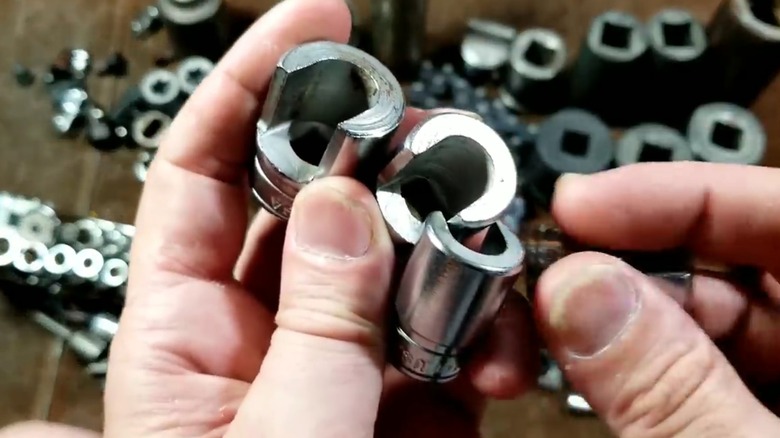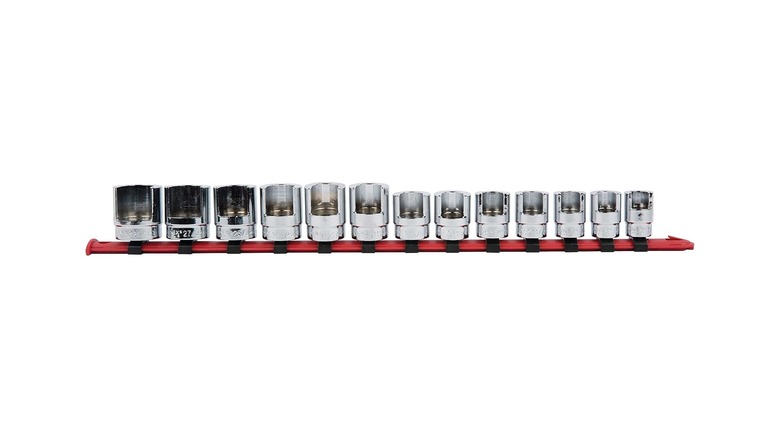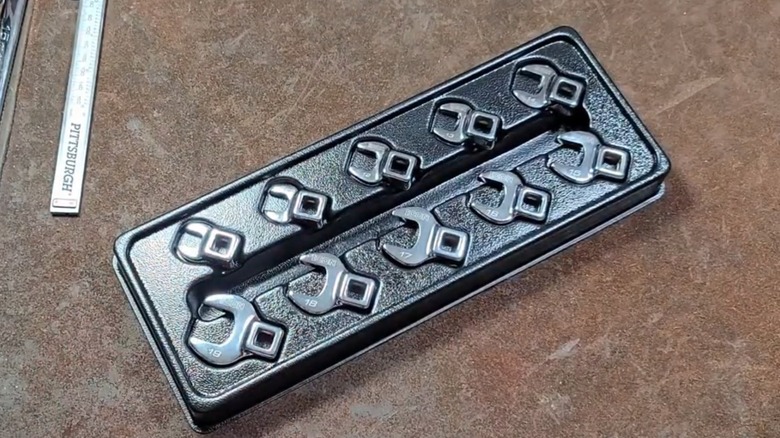
The world of tools is constantly evolving and expanding, and there's a virtually unlimited number of gadgets and devices designed to help us tackle our jobs and hobbies. If you work in the trades or are a hardcore DIY enthusiast, you're probably already aware of how vast and diverse the tool industry is. However, even seasoned pros can sometimes find themselves surprised, and equally thrilled, by niche devices.
One such obscure tool is a Weatherhead socket. If you've never heard of a Weatherhead socket,
don't worry. They're not incredibly common, and their applications are relatively limited to a few niche uses. That said, they can be wildly valuable tools to keep in your kit. Weatherhead sockets are designed to remove and install a specific type of hydraulic fitting. They take their name from the Weatherhead hydraulic fitting brand and are built to be used with 90-degree fittings. The reason why Weatherhead sockets are so useful is that those 90-degree fittings are often located in extremely tight spaces. Because of the 90-degree bend in the fitting, you can't slip a standard socket over the fastener, and if the fitting is located in a tight spot, you may be unable to use a basic wrench, too. That's where Weatherhead sockets come into play.
These devices look similar to regular sockets but have a cutout on one side. That allows you to place the socket over the fitting's fastener, as well as the 90-degree bend. Then, you can use a standard socket wrench and extension to remove or install the fitting. While they may not see the most use, Weatherhead sockets can be lifesavers when you need them. If you're interested in learning more about where to buy these devices, as well as about some similar tools, stick around.
Read more: 12 Hand Tools That Are Actually Worth Buying On Amazon
Where Can You Buy Weatherhead Sockets?

When it comes to buying Weatherhead sockets, you have a few options. Various tool truck companies, like Snap-on and Mac Tools, manufacture and sell these devices. If you work professionally in the auto or heavy-duty diesel repair industry, you're probably familiar with these brands. While tool truck brands like Snap-on are known for their high-quality, long-lasting products, they're also known for their exorbitantly high prices. For example, Snap-on sells individual Weatherhead sockets. The smallest ⅜-inch drive Weatherhead socket the company sells is a ⅜-inch model for $30.75. Other ⅜-inch drive sockets range from $34.75 to $41.25, while individual ½-inch drive Weatherhead sockets range in price from $68.25 to $76.00.
Mac Tools sells a seven-piece set of ⅜-inch drive Weatherhead sockets for $264.99. While still on the pricier end, the Mac Tools set represents an average lower cost per socket than buying individual sockets from Snap-on. Mac also sells individual Weatherhead sockets starting at $36.99 and topping out at $54.99. Note that Mac Tools only sells ⅜-inch drive Weatherhead sockets, while Snap-on sells both ⅜-inch and ½-inch drive.
If you're on a lower budget and looking for a decent set of Weatherhead sockets, you may want to consider Sunex Tools. Sunex sells a 13-piece set of ⅜-inch Weatherhead sockets for $109.46. The set includes 13 SAE sockets, as well as an organizer rail to keep them all secure. While still somewhat pricey, the Sunex set is far cheaper than the pro-tier brands covered above and is well-rated by users, boasting 4.8 out of 5 stars on the Home Depot site and 4.7 out of 5 stars on Amazon.
What Are Some Other Similar Types Of Sockets?

Besides Weatherhead sockets, there are a couple of other similar devices you may want to consider adding to your tool kit. The most common of those devices are crowfoot sockets. Like Weatherhead sockets, crowfoot sockets are designed to help us remove or install fasteners in tight spaces. However, unlike Weatherhead sockets, crowfoot sockets are not used exclusively for 90-degree hydraulic fittings, and as such are much more common. They look like wrench heads without the handle and feature a square drive hole, allowing you to attach an extension or ratchet wrench. They're frequently used in automotive applications and other trades and are ideal for fasteners that don't allow you to use a standard socket or wrench.
The second type of tool you may encounter that looks and works very similarly to Weatherhead sockets is an oxygen or O2 sensor socket. Like Weatherhead sockets, O2 sensor sockets feature a large cutout. However, while Weatherhead sockets tend to come in a shallow well design, O2 sensor sockets usually have a deep well design. These devices are meant for use with automotive O2 sensors. Oxygen sensors have an electrical connection, which prevents you from using a standard socket to remove or install them. The cutout on an O2 sensor socket allows you to slip the device over the sensor while the electrical cable sits in the cutout. These sockets are invaluable in the world of auto repair, as O2 sensors tend to be extremely difficult to remove with a standard wrench. The socket enables you to get a superior grip on the sensor and remove it without rounding the fastener or damaging the housing.
Want the latest in tech and auto trends? Subscribe to our free newsletter for the latest headlines, expert guides, and how-to tips, one email at a time.
Read the original article on SlashGear.










